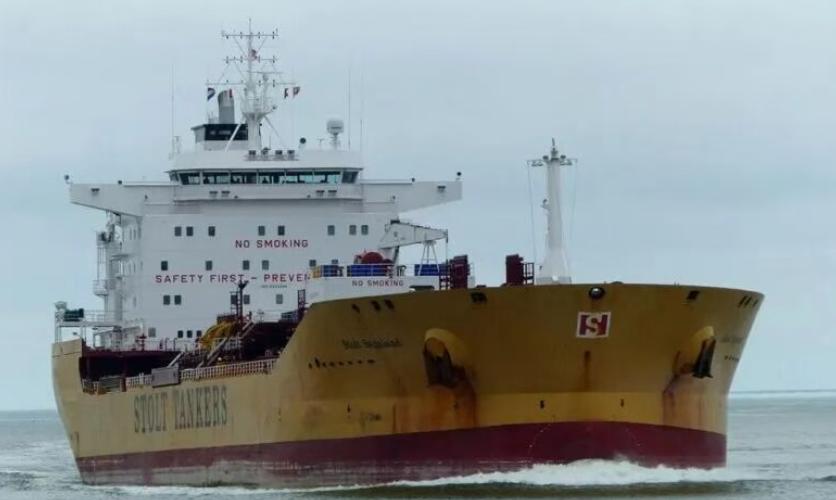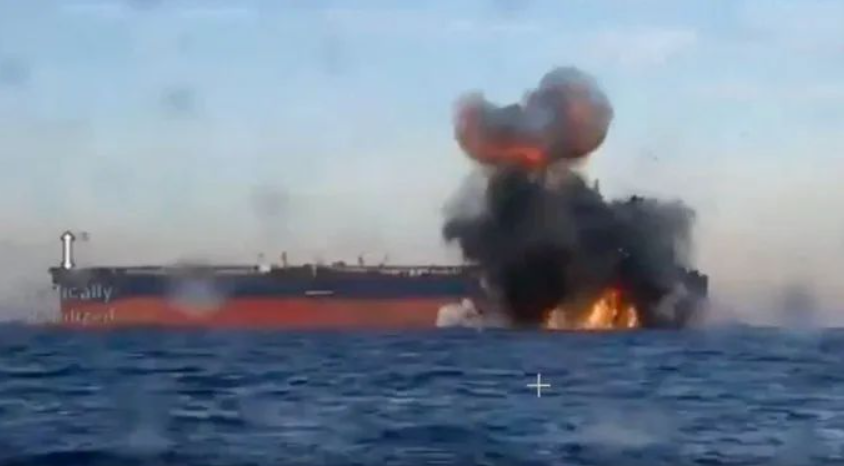
After years of relative calm, gunfire has once again echoed across the waters off Somalia. A Cayman Islands–flagged chemical tanker, Stolt Sagaland, came under armed attack some 332 nautical miles east of Mogadishu in the early hours of 3 November local time, only days after EU Naval Force (EUNAVFOR) raised the regional piracy threat level from “Low” to “Substantial.”
A Nighttime Assault: Armed Skiff Opens Fire
According to a UKMTO alert (Ref 039-25), the Stolt Sagaland reported that a grey-and-white skiff launched from a suspected mothership approached the vessel with four armed men attempting to board around 02:20 UTC.
Security firm Vanguard Tech said the pirates opened fire at a range of about 0.05 nautical miles, forcing the crew to execute defensive measures — sounding the alarm, increasing speed, and performing evasive maneuvers — while the embarked Armed Security Team returned fire.
The firefight lasted several minutes before the skiff broke off and retreated to its mother vessel roughly 5 nautical miles away. No injuries or damage were reported, and the tanker safely resumed its voyage.
The firefight lasted several minutes before the skiff broke off and retreated to its mother vessel roughly 5 nautical miles away. No injuries or damage were reported, and the tanker safely resumed its voyage.

Vanguard’s incident bulletin (03-11-25 [ATTACK] 332 NM Southeast Mogadishu, Somali EEZ) placed the attack at 0°3′19.08″ N, 50°31′3.72″ E.
The company relayed details to UKMTO and MSCIO, urging nearby vessels to maintain vigilance.
EUNAVFOR Atalanta immediately raised the sector’s threat level to its highest setting, confirming the presence of an active Pirate Action Group (PAG) possibly linked to an Iranian dhow hijacked last week. Aerial reconnaissance assets have been deployed to search the area.
Mother Ship Connection: The Hijacked Iranian Dhow
Analysts assessed the assault may be connected to the late-October hijacking of the Iranian-flagged fishing dhow Al Soheyl / Al Sohel near Garacad, which is now suspected to be operating as a pirate mothership supporting deep-sea attacks.
Security company Ambrey also reported unusual movements of the hijacked vessel along Somalia’s eastern coast — within striking distance of the Stolt Sagaland incident zone.
Just one day earlier, another fishing vessel in the same waters had been approached by a suspicious skiff but managed to deter it using sound alarms.
Rising Risk: 75% Probability of Attack
According to the latest advisory from the Maritime Security Centre – Horn of Africa (MSCHOA) operated by the EU Naval Force (EUNAVFOR) under Operation Atalanta, the southern Somali coastline (from Bereeda to Mereg, within 100 nautical miles of shore) has been assessed as a “Substantial” risk area, meaning a 55–75% likelihood of attack.
The northern peninsula (Bereeda–Laas Goray) remains “Moderate” (40–50 percent), and risk levels only drop to “Low” westward into the Gulf of Aden.
Since November 2023, MSCIO has logged 48 security incidents across the region, including suspicious approaches, armed robberies, and hijackings.
A Decade-Long Calm Broken
Somali piracy, which peaked between 2008 and 2012 before being crushed by international naval patrols, has been resurging since 2023 amid Red Sea instability and Houthi attacks on shipping.
Armed groups are once again hijacking fishing dhows as disguise and using them as mobile bases to launch small-boat assaults hundreds of miles offshore.
Renewed Vigilance Urged
Security analysts note that this attack occurred far beyond the traditional high-risk zone, indicating pirates’ growing blue-water reach. With the hijacked dhow still at large, more suspicious approaches are likely in the coming weeks.
UKMTO and EUNAVFOR have urged all vessels transiting the Somali Basin and western Indian Ocean to maintain heightened watch, report any anomalies, and strictly follow BMP5 best-management practices.
The Stolt Sagaland incident stands as one of the most serious armed attacks in Somali waters this year — a stark reminder that the nightmare of Somali piracy has not vanished. With regional instability mounting and hijacked fishing boats back at sea, the western Indian Ocean’s “low-threat” period may now be over.
by Xinde Marine News
The opinions expressed herein are the author's and not necessarily those of The Xinde Marine News.
Please Contact Us at:
media@xindemarine.com





